In this post I want to share some resources for finding Portuguese ancestors. Over the summer while doing in research in Spain, I potentially identified a Portuguese ancestor on my tree but veryyyyy far back in time (future post to come!).
While digging around in my tree in the 16th century I was able to identify a potential 11th great-grandfather named Antonio Vásquez. His marriage in 1613 to Francisca Gallardo mentioned that he was from Portugal and it seems that his native town was Guimarães, though it was written as “Migaraes”, but that’s another post for another day.
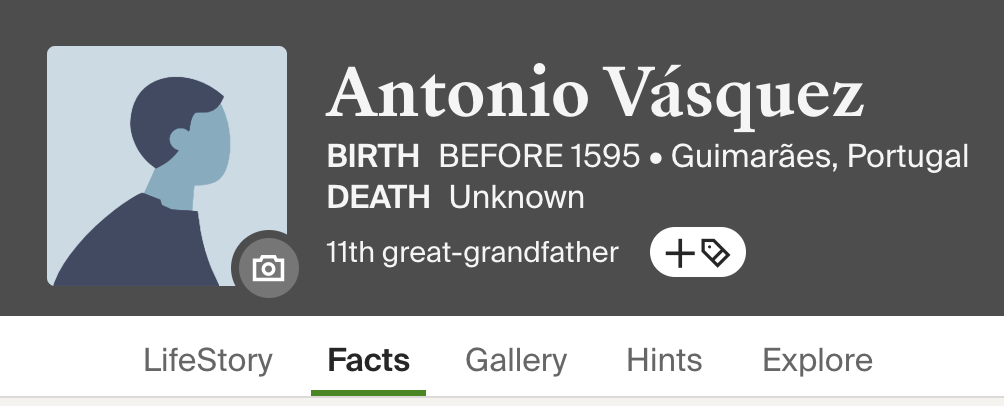
So today I will focus on tracing a Portuguese individual who lived out his life in Puerto Rico but who had roots in Portugal, specifically in the Azores. Using records from both Puerto Rico and Portugal, we will trace Antonio Viera’s life and learn more about him.
Antonio Viera: A death
I came across Antonio Viera through his death record which I found in the San Juan church books. I was likely searching for my Correa ancestors who are said to be from San Juan when I found this record. What surprised me the most was Antonio’s death record length – about 7 pages in total! He gives away money to both the poor and friends and family, as well as asking for prayers for himself and his family (even requesting 800 masses!). The most important part of his death record was where it mentioned where he was from and the names of his parents.
Antonio Viera was a native of Capelas, island of San Miguel, the legitimate son of Francisco Viera Fereyra and Rosa María de Sosa. He was married to Antonia Espino at the time of his death. He left behind a last will and testament with the notary Nicolás Aguajo authorized on 30 November 1795. Likely his testament can be researched at the Archivo General de Puerto Rico.
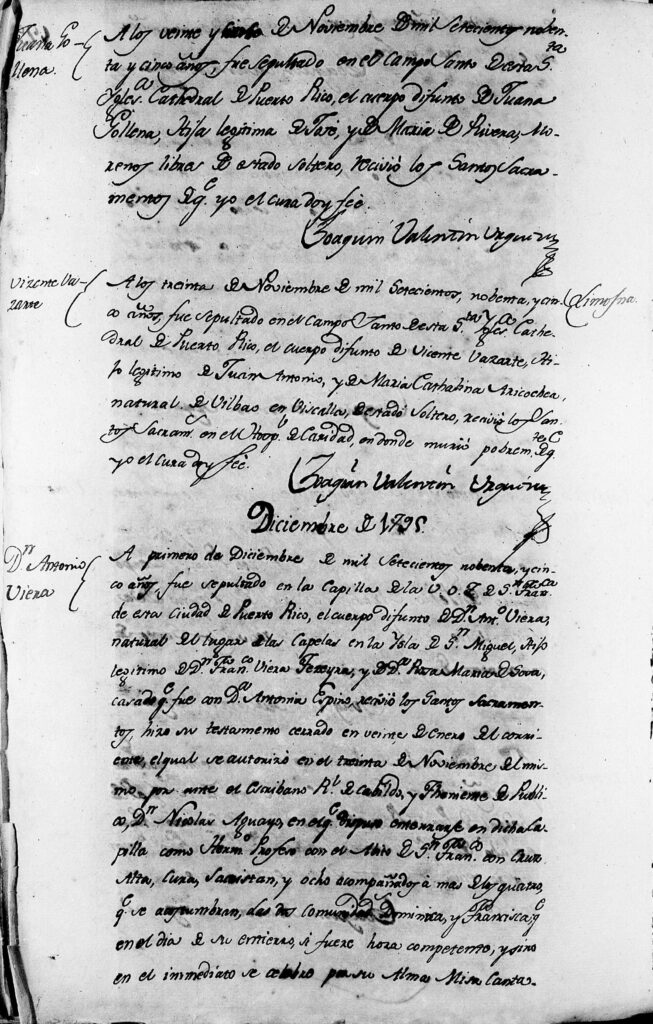
From this death record, we know exactly where Antonio Viera was from in São Miguel in the Azores, a set of islands belonging to Portugal; however, we don’t know when Antonio was born. Since he died in 1795 and he was married, we would expect Antonio Viera to have been at least over 18-21 years old, so we would expect him to have been born no later than 1774-1777. One big thing though to notice in Antonio’s death is the amount of money left behind, which makes me think that Antonio was probably not that young since he would have needed time to amass his wealth (unless he came from a wealthy family). The problem though is we don’t how how old Antonio was. This was a potentially big problem because we could search days on end through pages of baptisms to find him, especially if Capelas was a big town or city in São Miguel. Therefore, learning more about Antonio’s life in Puerto Rico could be beneficial to getting a better picture of his age.
Antonio Viera:
A Marriage
Searching in the marriages that took place in San Juan before 1795 to find Antonio Viera would be helpful in establishing a better baseline for his birth year. If he married in the 1780s-1790s, we would know that Antonio was a younger man when he died; however, the further we pushed back, the older he would likely be. I hit the jackpot when I found a marriage between Antonio Viera and Antonia Espino in the same church of Nuestra Señora de los Remedios in San Juan, Puerto Rico on 25 June 1753.
Antonio was listed as a native of the island of San Miguel and the legitimate son of Francisco de Viera and Rosa María, while Antonia de Espino was listed as a native of “la ciudad de Puerto Rico” (current day San Juan), the legitimate daughter of José Espino and Juana Meleago.
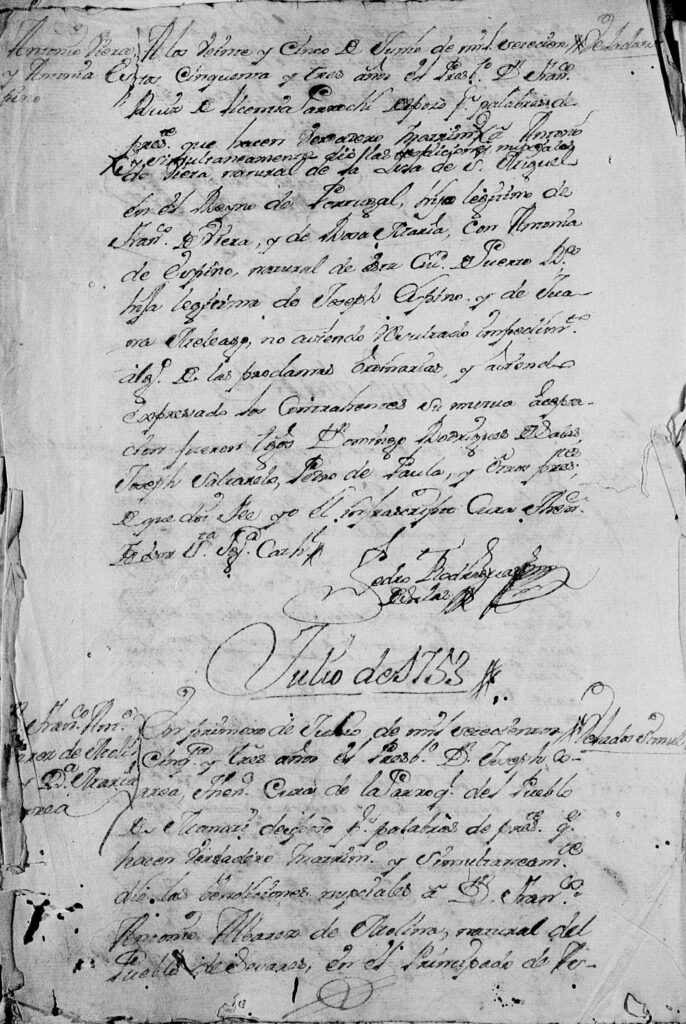
This means that when Antonio died he had been married to Antonia Espino for 42 years. Similarly, if we estimated that Antonio was a young groom when he married say between 18-21, he would have been born about 1732-1735. To be conservative and say he was 25 years old would put him at about 1728. All of these estimates are helpful when searching for a birth record, especially when the parish records do not have an index – which was the case for Capelas, São Miguel, Portugal.
Caveat: I actually found this marriage record after I found his birth record in Portugal since I dove right into research there; however, it helped to give me a better idea of his age and confirmed what I found in Portugal. There is no right or wrong order to do research sometimes, I was very confident that I was going to be able to find him in Capelas, São Miguel given the population of the town; however, for other searches you might want to have as much information as possible before attempting to research your ancestor back in Europe (or anywhere else from that matter).
São Miguel,
Ilhas Açores
São Miguel is one of the Azores islands which belong to Portugal and are an autonomous region along with Madeira. Every single photo seems to make this place look like paradise and should be on everyone’s bucket list! The Azores are also an archipelago composed of nine volcanic islands. Settlement on the islands didn’t start until 1433-1436 when the mainland Portuguese settlers came with Gonçalo Velho Cabral. Apparently, Flemish settlers also came to the islands reaching 2,000 Flemings on the islands of Terceira, Pico, Faial, São Jorge, and Flores by 1490. The islands also suffered overpopulating in the 16th century which drove islanders to seek new opportunities and lives in countries such as the United States, Canada, and Brazil (Wikipedia).
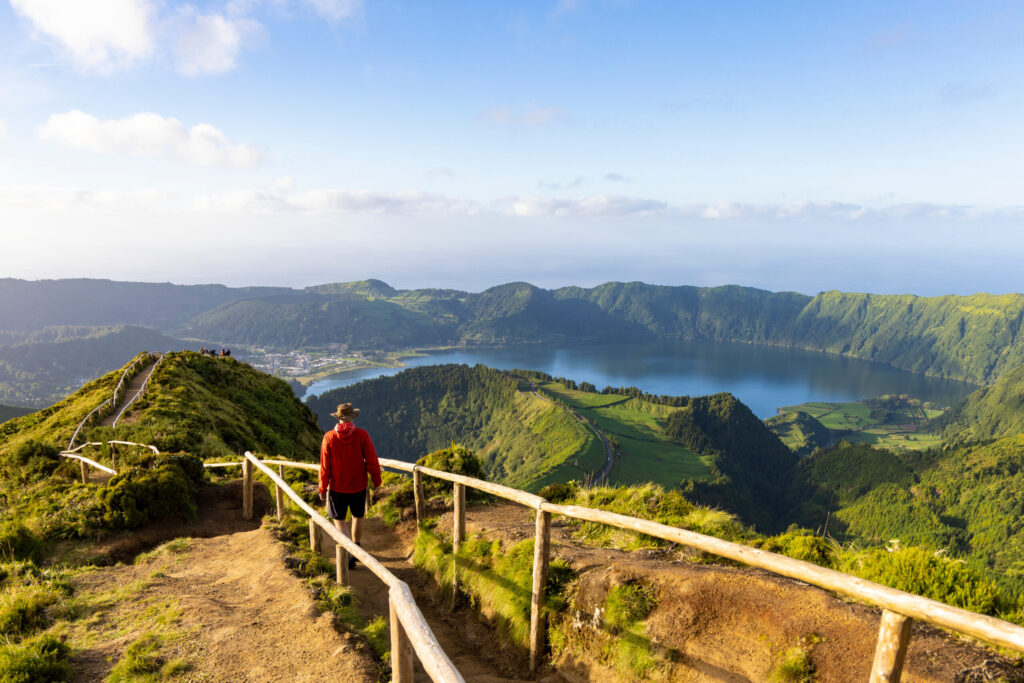
Azores Genealogical resources
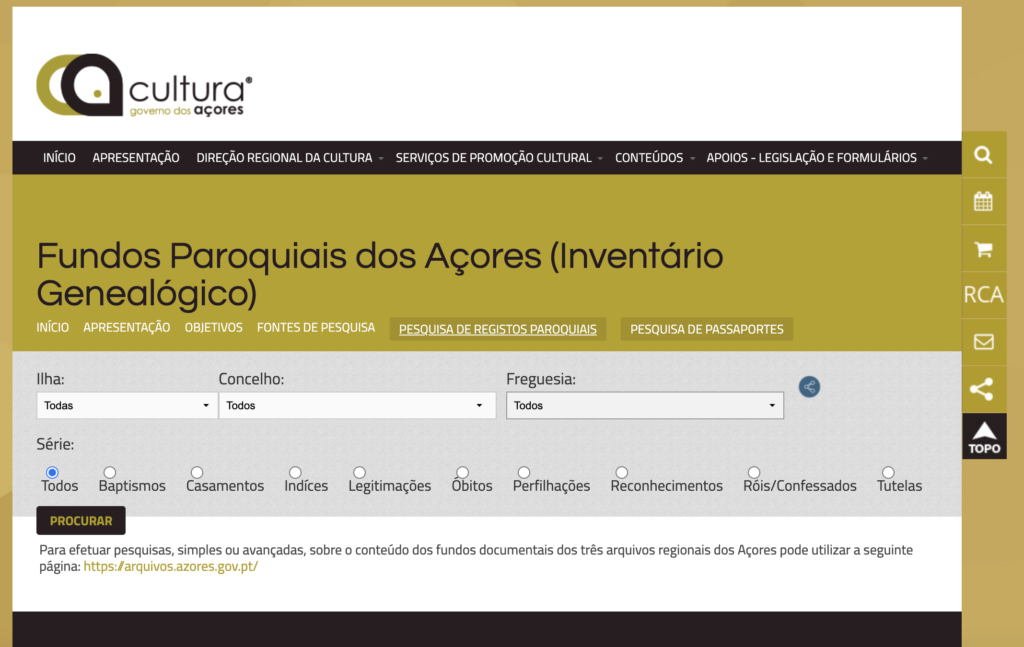
Luckily the Azores have an online website with genealogical resources such as baptisms, marriages, deaths, and other records; it is important to note that depending on your island of interesting and time period there might not be any records available (though I am not sure if it’s simply because they’re not indexed or if because they just don’t exist for that time period). This also may depend on when the town was founded.
On the website you can see that there are three main categories to choose from: ilha (island), concelho (council/town hall), and freguesia (parish). In our case we would needed to search in São Miguel (ilha), Ponte Delgada (concelho), and finally Capelas (freguesia). From there I could chose if I wanted to find a baptism for Antonio Viera first or a marriage between his parents Francisco Viera and Rosa Sosa.
I originally tried to find a baptism first, but not having an exact year was going to be difficult (this search was conducted before I found Antonio Viera’s marriage in Puerto Rico). Since usually within any given year there are less marriages than births, I decided to look for marriages starting in the early 1700s and work my way up until at least the 1770s which was when Antonio would have been the absolute youngest. If I couldn’t find them, then I would take this as a sign that he was probably not from Capelas.
Lucky for me, I was able to find his parents!
Francisco Viera & Rosa Souza: A Marriage
One of the most important things to keep in mind is that though Spanish and Portuguese and similar languages (both Romance), there are definitely differences between them. Therefore, spellings of names could be an influence into how they were spelt in Puerto Rico versus their Portuguese original names, such as the surname “Sosa”.
When I began my search for Antonio Viera, I expected to find a Rosa Sosa and then it hit me! Sosa was likely the Spanish version of the surname Souza, a common Portuguese surname. Viera I imagined would be close to its originally spelling and having Viera Feyrera was going to be super helpful as well.
Similarly, it is important to take into consideration surname conventions. Typically in Latin American culture we inherit our father’s surname and then our mother’s – usually together. In Portuguese naming customs, you might see the mother’s surname being passed down first over the father’s. This was something to keep in mind just in case we found them, as say, Francisco Souza and Rosa Viera. Luckily, their names were written down correctly in Puerto Rico records.
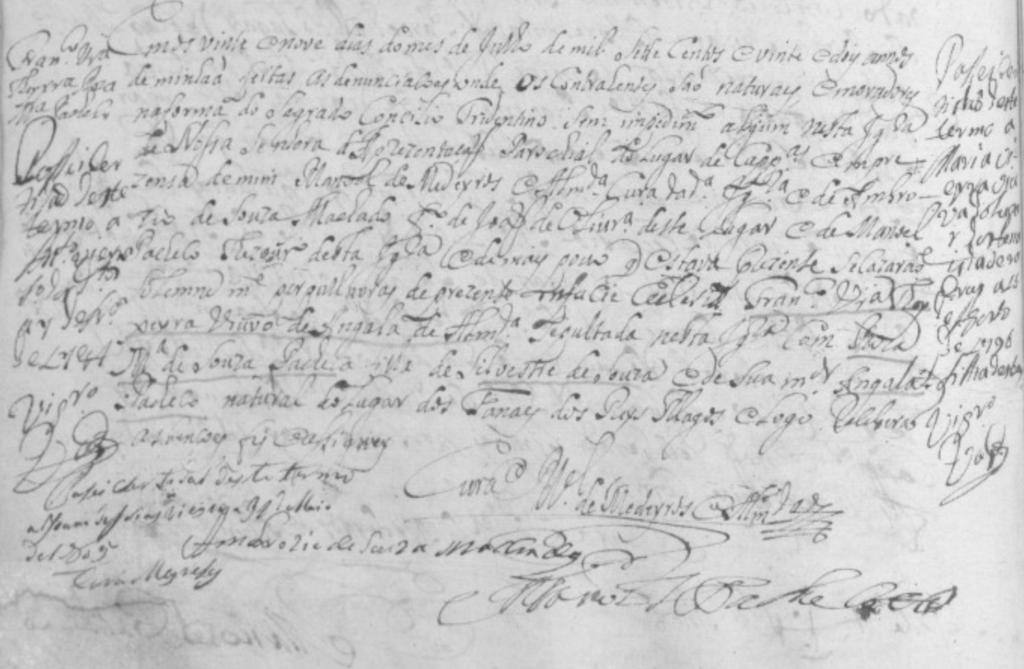
The information on the record is a bit compressed so fully reading and understanding the document (while not being a Portuguese speaker) was a bit difficult; however, while researching for this record I made sure to look for any Francisco marrying a Rosa so I always made sure to stop and fully read the bride’s and groom’s name when finding a Francisco. I almost skipped over this one since the wife was surnamed Pacheco, but again, I stopped to fully read the certificate.
It mentions that on 29 July 1722 in the parish of Capelas, appeared to marry Francisco Via(?) Teyxeyra(?), widow of Angala de Almda (Almeda?), buried in this parish, and Roza Maria de Souza Pacheco, daughter of Silvestre de Souza and his wife Angala Pacheco, native of dos Fanaes dos Reys Magos?
Though it was not an 100% match, most of the information lined up. This is important to keep in mind when researching across countries, cultures, and languages. Both the husband’s name, Francisco, and wife’s name, Roza María, matched the information we had in Puerto Rico. Similarly, though she was registered as a Pacheco we can see that her full name was Roza Maria de Souza Pacheco, being a de Souza through her father Silvestre and a Pacheco through her mother Anglada. This is where knowing about Portuguese inheritance surname patterns was important.
Lastly, through Francisco’s name did not appear to be Viera Fereyra – it was close enough to peak my interest. Keeping in mind that surname spelling was fluid in earlier history, a name such as Viera could easily appear as other variations. There are two entries on the side of the marriage record, on the left it seems to mention the name An.to (Antonio) which was his son’s name who traveled to Puerto Rico. On the right hand side, we see the name Maria Vieyra?; however, I was not able to fully make out the note given the handwriting and shorthand abbreviations.
Nonetheless, we had a starting point! Also, I had already checked baptisms from 1729-1770s looking for Antonio Viera and not found a good match so searching between 1722-1729 would be a good place to start since I had now discovered a couple with a good overall match.
Antonio Viera: A Birth
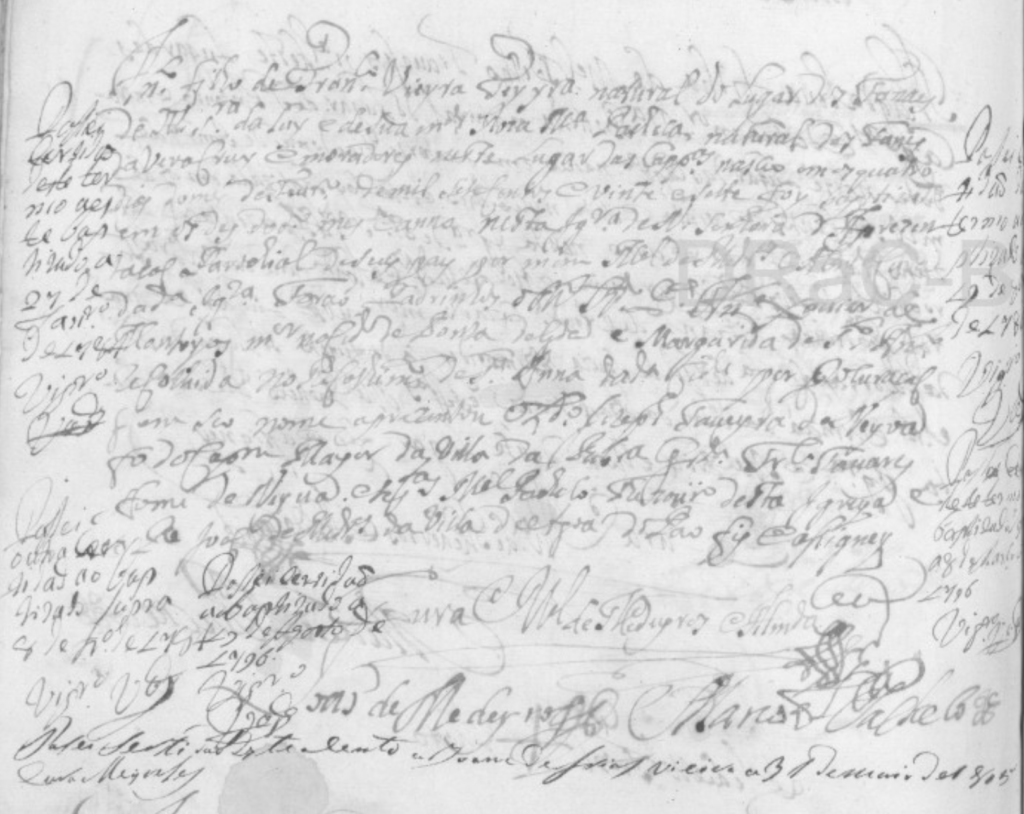
Searching up from 1722 I was able to find a match! A son named Antonio who was born on 4 February 1727 and baptized on 10 February 1727. The record stated that Antonio was the son Fran.co (Francisco) Vieyra Feyyra, native of dos Fanaes de N. Sra. (Nuestra Señora) da Luz and his wife Roza Maria Pacheco, native of dos Fanes a veya? Cruz and residents of Capelas. The record does list the names of his godparents but I did not focus much on them in this research.
It seems that Francisco was a native of the town known as Fenais da Luz, also located in Ponta Delgada and Roza was potentially from the same town though I see the words “Veya Cruz” potentially to mean Velha Cruz. Learning more about the couple could help us to identify their towns of origin and baptisms.
Final Thoughts
& Resources
From our research we were luckily able to identify where Antonio was born, married, and died which can be fairly difficult for immigrants, especially in the 18th century to Puerto Rico. We were very lucky to have a town identified already before we began our search which was instrumental in finding his baptismal record quickly. Knowing the town of Capelas help to facilitate where we could continue to learn about Francisco and Roza by continuing to study the records of the Azores on their website.
Another good website to know is the Tombo website (https://tombo.pt/) which includes genealogical records for other places in Portugal. It includes genealogical records for mainland Portugal, the Azores, and Madeira. It’s definitely a useful website and I would explore it myself to see if could my own ancestors in Guimãraes.
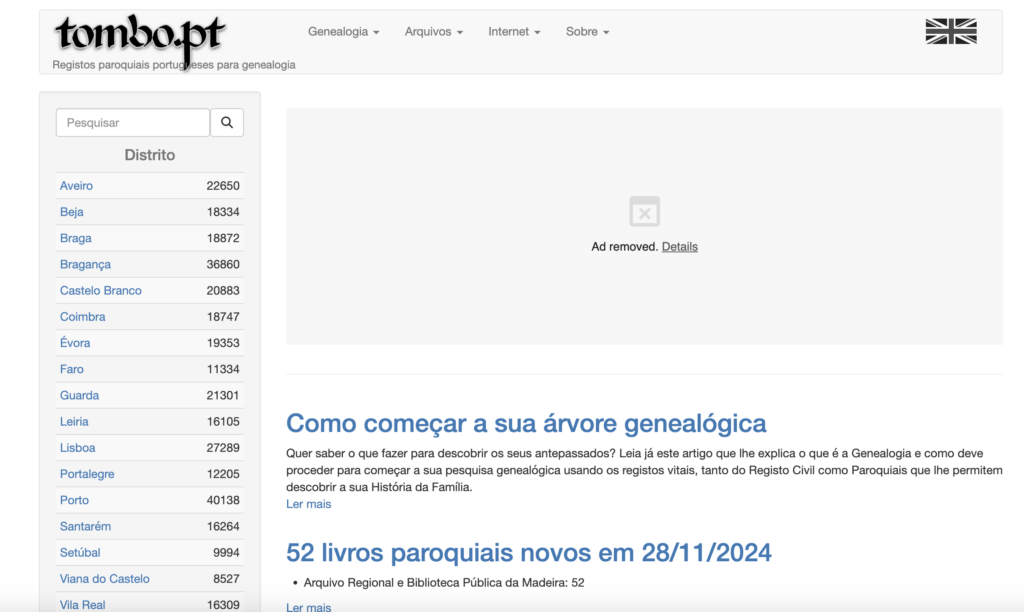

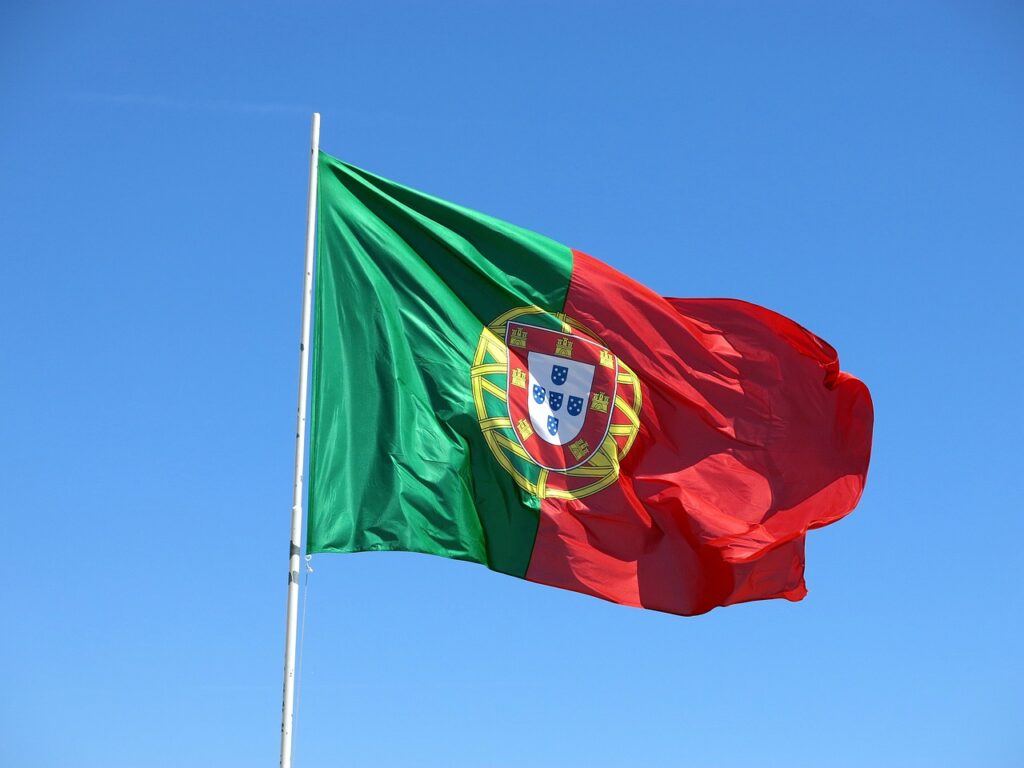
Luis (primo) amazing research!! Love it!! Please keep in touch— and let me know where you are??
MariTere
I am Puerto Rican and Spanish and recently found per DNA that I am 30% Portuguese, now that I know, I know why the family changed Souza to Sosa when they move to a Spanish area in Puerto Rico. When I think of it certain members of family did look Portuguese. The name is really Souza.